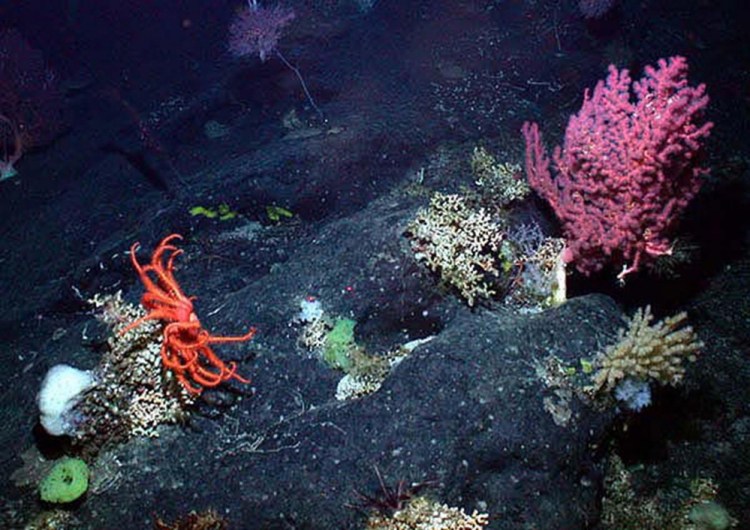As part of the Trump administration’s review of national monuments, the Department of Commerce is reviewing four marine monuments. All of the designations should be left in place, but I am writing particularly about the Northeast Canyons and Seamounts National Monument.
This marine monument includes three underwater canyons on the southern edge of Georges Bank, and four seamounts farther to the southeast. The scale of these formations is tremendous – the canyons are deeper than the Grand Canyon, and the vertical rise of the seamounts is greater than any mountain in the eastern United States. Because of their remoteness and difficult topography, they have been relatively free of impacts from commercial fishing, especially bottom trawling.
The marine life within them is quite rich. There are cold-water coral forests, some of them centuries old, growing on the canyon walls and seamount peaks. Seventy-three species of coral have been identified so far, and there are believed to be more. This rich bottom environment combined with nutrient upwelling supports diverse populations of fish, marine mammals and seabirds.
Although the Gulf of Maine is an extremely productive ecosystem overall, it is a shadow of what existed four centuries ago. Most of us are familiar with the depletion of fish stocks in recent decades, but this depletion is in fact a continuation of a long trend.
A partial history of this trend is told in University of New Hampshire historian Jeffrey Bolster’s book “The Mortal Sea: Fishing the Atlantic in the Age of Sail.” In it, he recounts descriptions by early European settlers of the Gulf of Maine’s abundance. As just one example, James Rosier wrote that in 1605 off Monhegan Island, his crew “with a few hooks got above thirtie great Cods and Haddocks, which gave us a taste of the great plenty of fish which we found wheresoever we went upon the coast.” But these days, Maine’s formerly thriving groundfishing industry is struggling to survive.
And we face an uncertain future. On the one hand, good management measures are now in place to rebuild most fisheries, and the removal of some dams and improvement of stream passage is restoring sea-run fish stocks. At the same time, we are beginning to see the impact of greenhouse-gas pollution, such as warming ocean temperatures and increasing ocean acidification.
Most of us recognize the need for protected places, such as wilderness areas, ecological reserves and wildlife refuges, on land. We need them in marine environments as well.
A marine protected area can be both a link to the ecological richness of the past and a buffer against future environmental threats. It can give us an indication of what the natural environment looks like when it’s relatively free from human use – a “baseline” for scientific research. It can also shelter populations of marine life such as shell-building organisms and cold-water-adapted species, which will be under increasing stress in years ahead.
The Northeast Canyons and Seamounts National Monument is the first marine monument created on the Atlantic coast. It’s only 1.5 percent of U.S. waters along the Atlantic, and yet is the only area that provides permanent protection from commercial uses such as fishing, oil and gas exploration and mining. Marine protected areas such as this, along with other measures, will be essential to rebuilding the health and productivity of the Gulf of Maine to its true potential and protecting it from future threats.
For several decades, my family’s business, Diversified Communications, has produced commercial fishing and seafood trade shows and the commercial fishing publication National Fisherman. I’m proud of our connections to these industries, and I believe that a true marine protected area in the Northeast, like the Northeast Canyons and Seamounts National Monument, will help support a healthy Gulf of Maine and the communities that depend on it.
Public comments about any of the marine monument designations can be made at the Commerce Department’s website (regulations.gov/document?D=NOAA-NOS-2017-0066-0001; click the “Comment Now!” icon). The comment period continues through Tuesday.
Send questions/comments to the editors.



Success. Please wait for the page to reload. If the page does not reload within 5 seconds, please refresh the page.
Enter your email and password to access comments.
Hi, to comment on stories you must . This profile is in addition to your subscription and website login.
Already have a commenting profile? .
Invalid username/password.
Please check your email to confirm and complete your registration.
Only subscribers are eligible to post comments. Please subscribe or login first for digital access. Here’s why.
Use the form below to reset your password. When you've submitted your account email, we will send an email with a reset code.